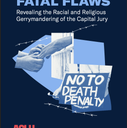
On January 9, 2025, the U.S. Department of Justice released its Review and Evaluation of the Tulsa Race Massacre of May 31-June 1, 1921. The department characterized the report as “the federal government’s first thorough reckoning” designed to acknowledge, illuminate, and preserve for history the “horrible ordeals of the massacre’s victims” even if they found no legal avenue for prosecution of the crimes committed over a century ago.
The report confirms that no federal charges were filed at the time, nor were any state murder charges brought, even though there was evidence to suggest that a number of unarmed and fleeing Black citizens of Tulsa were shot point blank in and around their homes or as they fled the city. Several accounts are well documented, including the murder of A.C. Jackson, a Black doctor “recognized as one of the country’s leading surgeons.” A white landowner, John Oliphant, reported going to the all-Black Greenwood neighborhood of Tulsa on June 1, 1921, to check on his property and seeing the 70-year-old Dr. Jackson walk out of his home with his hands in the air, surrendering to armed white men. Mr. Oliphant recounted to the federal investigator sent to Tulsa after the massacre that despite Dr. Jackson’s lack of resistance and Mr. Oliphant’s pleas, one of the white men shot Dr. Jackson, who later died from his wounds. Mr. Oliphant then witnessed the shooter and his companions looting Dr. Jackson’s house.
The report concludes that “the government could have investigated any police officer, National Guardsman, or other public official who murdered Black residents on the grounds that such an act deprived the victims of life without due process of law.”
As noted in DPI’s October 2022 report on race and the death penalty in Oklahoma, Oklahoma was no stranger to extrajudicial violence against its Black citizens in the period leading up to the massacre. Between 1900 and 1930 there were more lynchings than executions. Oklahoma became a state in 1907, and from that point until the Tulsa Massacre in 1921, extrajudicial lynchings were favored almost 2 to 1 over legally sanctioned executions (36 lynchings/19 executions). Of the 19 individuals executed in this timeframe, 13 were Black (68%). Given the relative size of the Black population at the time (7.5%), these numbers mean that a Black person was 25 times more likely than a white person to be executed.
In the modern era, Tulsa itself has been a national outlier in executions. As of 2022, Tulsa was tied with Montgomery County, Texas as the most prolific executioner of any county between 500,000 – 750,000 in size and had the second largest per capita execution rate at 2.6 per 100,000 population. Tulsa County ranked fifth for jurisdictions with the most executions in the country since 1972.
Death sentences in the modern era in Tulsa are also frequently overturned. A review of death sentences imposed in Tulsa between 1972 and January 1, 2021, surfaced that nearly half (24) of all death sentences imposed (50) have been reversed or have resulted in a commutation or exoneration, making a death sentence no more statistically reliable than a coin toss.
The Tulsa Race Massacre in 1921 was notable for the level of participation of local police and national guard forces. This pattern of police violence continues into the modern era. In 2022, according to the Tulsa Police Department, Police Scorecard, the Tulsa Police Department has the second deadliest police force among the 100 largest city police departments in the U.S. The average rates of killings by the Tulsa police department was 9.5 per 1,000,000 residents, while the average among the 100 largest city police departments was 4.4. Data from 2013 – 2021 show that Black people are overrepresented in fatal police encounters with these police departments: 24% of people killed by the Tulsa Police Department were Black.
Review and Evaluation of the Tulsa Race Massacre (The Report)


